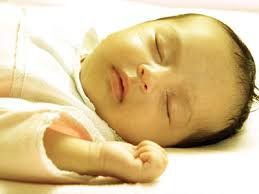This is an automatically translated article.
The article is professionally consulted by Master, Doctor Vu Quoc Anh - Department of Pediatrics - Neonatology - Vinmec Danang International General Hospital. Dr. Anh has nearly 10 years of experience as a resident doctor and treating doctor.1. Distinguishing between physiological jaundice and pathological jaundice in newborns
1.1 Physiological Jaundice Physiological jaundice in newborns appears very early, only about 1-2 days after birth. Specifically, the skin of the neck, face, chest, abdomen and eyes of the child is yellow, and even the urine of the child is darker.In full-term infants, the level of bilirubin in the blood is not more than 12mg%. In premature infants, this concentration is not more than 15mg%. Along with that, the rate of increase of bilirubin in the blood is always below 5mg%/day.
When the baby is born, the fetal red blood cells will break down and be replaced by mature red blood cells. During this time, the baby's liver function is not perfect, especially in premature babies, so the body cannot filter and eliminate all the bilirubin in the blood. The accumulation of bilirubin in the body has caused physiological jaundice in children.

1.2 Pathological jaundice
Clinical manifestations of jaundice include:Physiological jaundice lasts more than 1 week in full-term infants and lasts more than 2 weeks in premature infants. The child's whole body skin is yellow, including the soles of the feet and palms The degree of jaundice is darker than usual Jaundice does not improve but becomes more and more serious The child may have a fever, lethargy fatigue, even convulsions. Causes of pathological jaundice in newborns include:
Incompatibility between mother and child's blood group Children with congenital hemolytic anemia Children infected with fetal virus Children with delayed meconium ... Even though the child has pathological jaundice because Regardless of the cause, it is necessary to intervene early to avoid dangerous complications.
Recommended video:
Distinguish physiological neonatal jaundice and pathological jaundice
2. Which babies are susceptible to jaundice?
Babies born prematurely are at higher risk of developing jaundice. The reason is that the baby's liver function is not yet fully developed like a full-term baby, and its ability to filter waste is poor. Children are injured, bruised during childbirth. Wounds cause blood cells to decompose, thereby increasing the amount of bilirubin in the blood. Children are allergic to breast milk, formula milk3. Complications of pathological jaundice
Pathological jaundice, if not treated in time, can lead to complications that seriously affect the child's development such as:Acute cerebral bilirubin: When the amount of bilirubin in the blood is too high, it will exceed the allowable threshold. affect brain cells. Bilirubin from the blood enters the brain causing brain damage. Manifestations of acute cerebral bilirubin are lethargy, high fever, fussiness, refusal to breastfeed...

4. Treatment of pathological jaundice
In case the child has physiological jaundice, parents only need to let the child sunbathe for about 20 minutes a day. Sunbathing in the time frame from 7:00 am - 8:30 am every day is the most suitable. Natural sunlight contains a lot of vitamin D, which helps the child's body synthesize calcium, avoiding rickets. After about 1-2 weeks, physiological jaundice will disappear.For pathological jaundice, parents should not subjectively let the child self-treat at home. It is necessary to take the child to the hospital for examination so that the doctor can have a timely treatment plan. During the treatment process, it is also necessary to pay attention to the child's nutrition.
Please dial HOTLINE for more information or register for an appointment HERE. Download MyVinmec app to make appointments faster and to manage your bookings easily.
SEE ALSO
Newborns with jaundice mother should eat Jaundice due to immature liver in premature babies Reasons for prolonged neonatal jaundice














